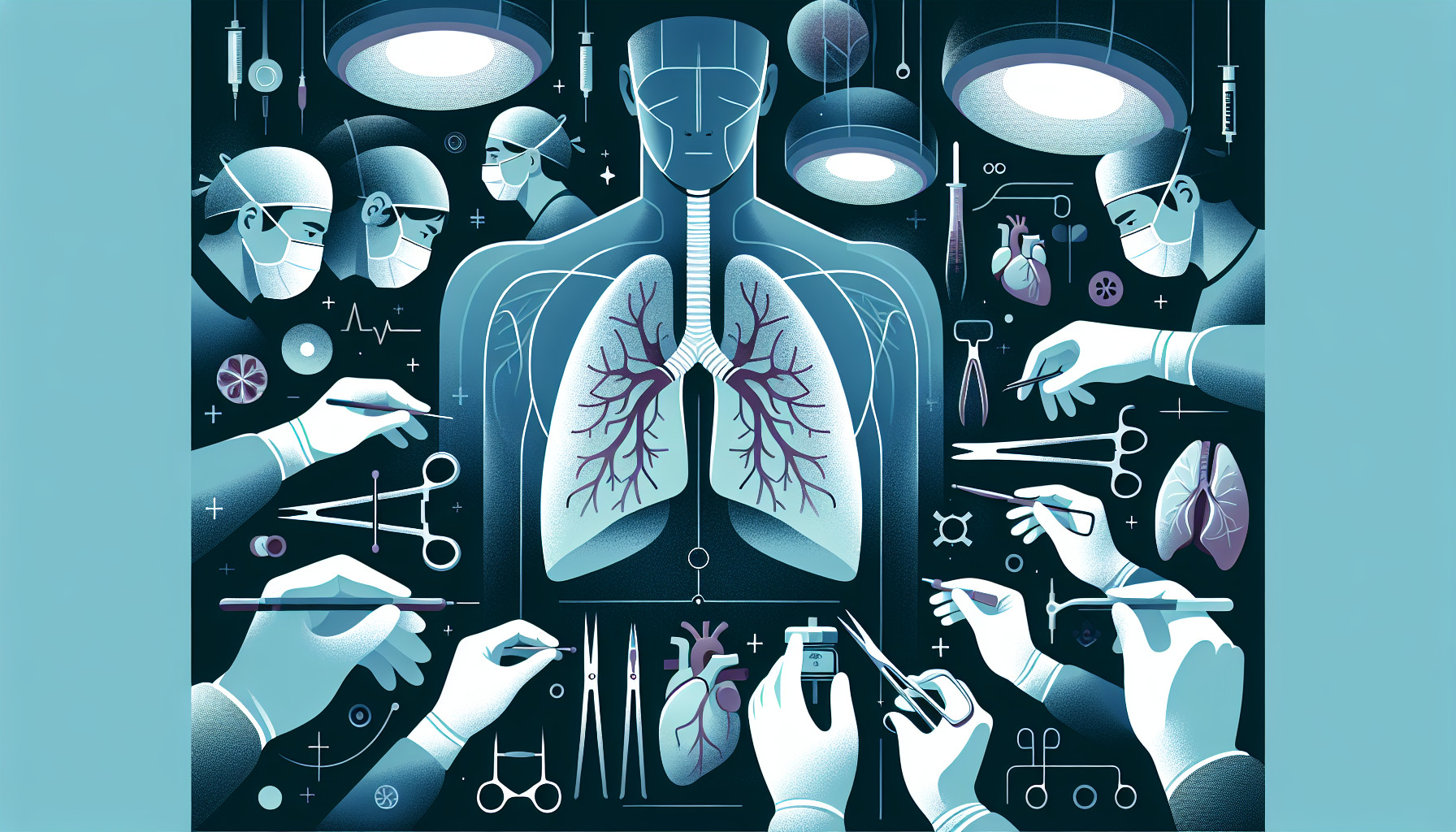Our Summary
This research paper looks at the use of the Lung Allocation Score (LAS) in Germany over a five-year period. The LAS is a system used to decide who should receive a lung transplant, based on how urgently they need it and how likely they are to benefit from the transplant. The study found that the use of the LAS has led to more lung transplants for people with a type of lung disease called interstitial lung disease, and fewer transplants for people with chronic obstructive pulmonary disease. Despite this, the amount of time people had to wait for a transplant didn’t really change. The study also found that people who received two new lungs (bilateral sequential lung transplantation) tended to live longer than those who only received one (single-lung transplantation). The researchers concluded that the LAS is a good system for deciding who should receive a lung transplant, but more research is needed to see if it can be improved.
FAQs
- What is the Lung Allocation Score (LAS) and how is it used in lung transplants?
- How has the use of the LAS changed the distribution of lung transplants among patients with different types of lung diseases?
- Does the research indicate any difference in survival rates between patients who received two new lungs versus those who received one?
Doctor’s Tip
A doctor might tell a patient considering a lung transplant to make sure they fully understand the Lung Allocation Score (LAS) system and how it may impact their chances of receiving a transplant. They might also advise the patient to discuss with their medical team the possibility of bilateral sequential lung transplantation, as this may lead to better outcomes in terms of survival. Additionally, the doctor may encourage the patient to stay proactive in their care and follow all recommendations to maintain their health while waiting for a transplant.
Suitable For
Patients who are typically recommended for lung transplant include those with end-stage lung disease that has not responded to other treatments, such as:
- Chronic obstructive pulmonary disease (COPD)
- Idiopathic pulmonary fibrosis
- Cystic fibrosis
- Pulmonary hypertension
- Alpha-1 antitrypsin deficiency
- Sarcoidosis
- Bronchiectasis
- Lymphangioleiomyomatosis
Patients must also meet certain criteria, such as being physically fit enough to undergo surgery and having a good support system in place for post-transplant care. Additionally, patients must not have any other medical conditions that would significantly reduce their chances of a successful transplant.
Timeline
Before lung transplant:
- Patient is diagnosed with end-stage lung disease and is evaluated by a transplant team to determine if they are a suitable candidate for a lung transplant
- Patient undergoes a series of tests and assessments to assess their overall health and determine their placement on the transplant waiting list
- Patient is placed on the waiting list and waits for a suitable donor organ to become available, which can take weeks to years
- Patient may experience worsening symptoms and decline in health while waiting for a transplant
After lung transplant:
- Patient undergoes the lung transplant surgery, which typically takes several hours
- Patient is monitored closely in the intensive care unit immediately after surgery to ensure the new lungs are functioning properly
- Patient stays in the hospital for several weeks to recover from surgery and receive post-transplant care
- Patient must take immunosuppressant medications for the rest of their life to prevent rejection of the new lungs
- Patient undergoes regular follow-up appointments and tests to monitor the health of the new lungs and overall well-being
- Patient may experience complications or side effects from the transplant surgery and medications, and may need additional medical interventions or treatments.
What to Ask Your Doctor
- How does the Lung Allocation Score (LAS) system work and how is it used to determine who receives a lung transplant?
- What criteria are used to assess a patient’s eligibility for a lung transplant?
- What are the potential risks and complications associated with a lung transplant procedure?
- How long is the typical wait time for a lung transplant and what factors can affect this wait time?
- What is the success rate of lung transplants and what are the factors that can affect the outcome of the procedure?
- What is involved in the post-transplant care and recovery process?
- How will having a lung transplant affect my daily activities and quality of life?
- What support services are available for patients before, during, and after a lung transplant?
- Are there any alternative treatments or options available for my condition besides a lung transplant?
- What are the long-term implications and considerations for patients who have undergone a lung transplant?
Reference
Authors: Schuba B, Scheklinski M, von Dossow V, Schneider C, Preissler G, Kneidinger N, Neurohr C, Michel S, Hagl C, Schramm R. Journal: Eur J Cardiothorac Surg. 2018 Aug 1;54(2):328-333. doi: 10.1093/ejcts/ezy035. PMID: 29462335
